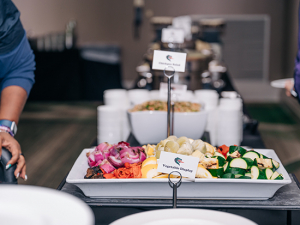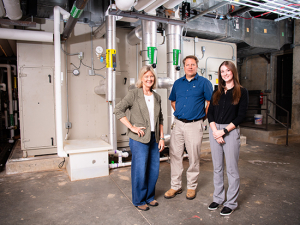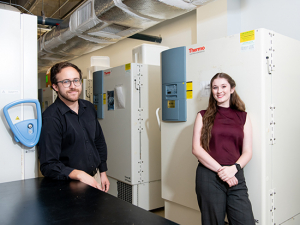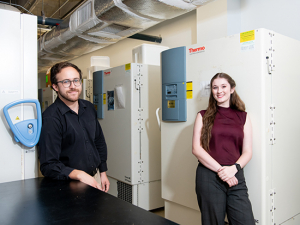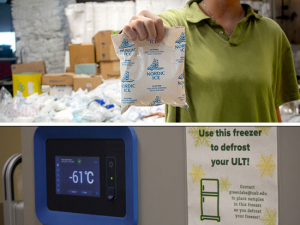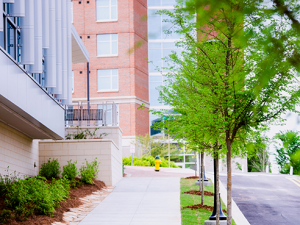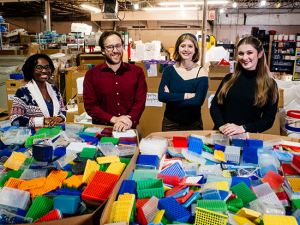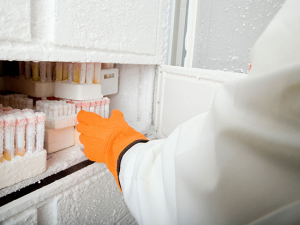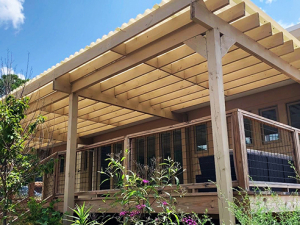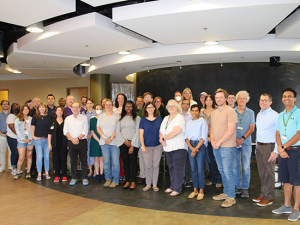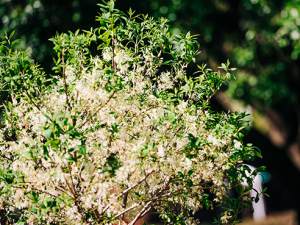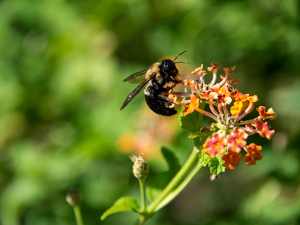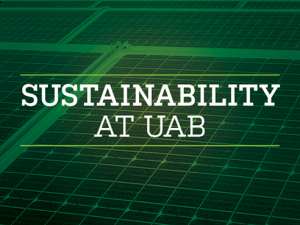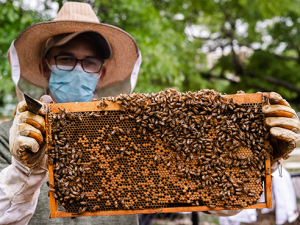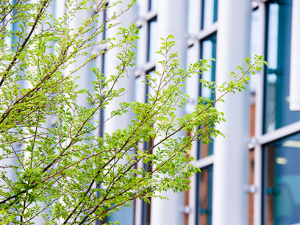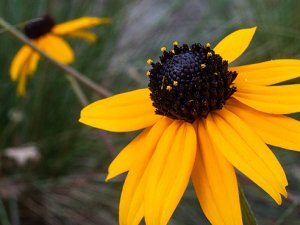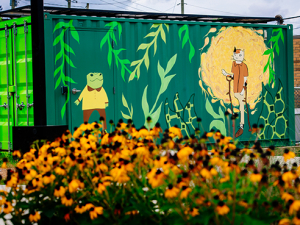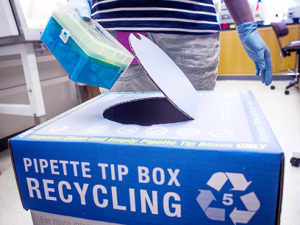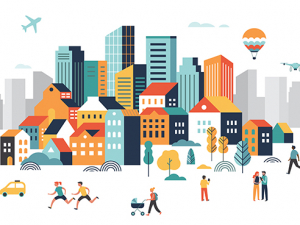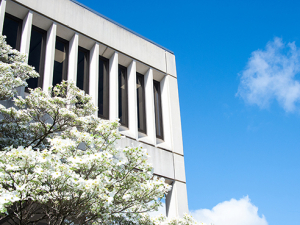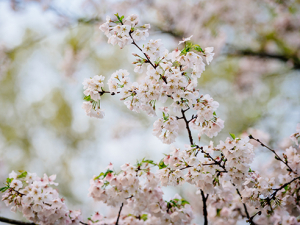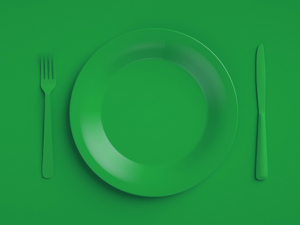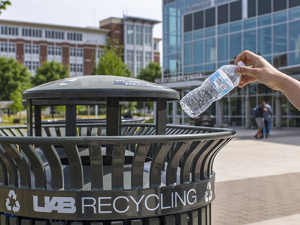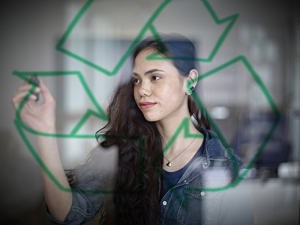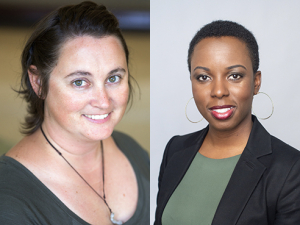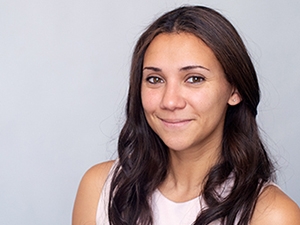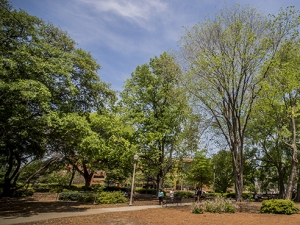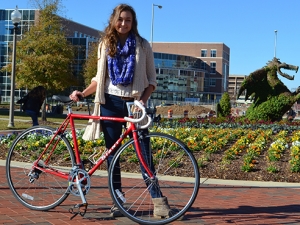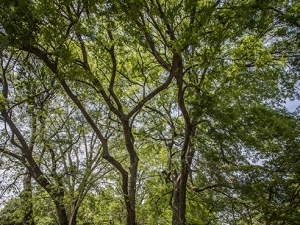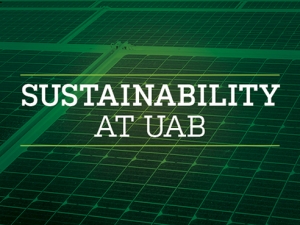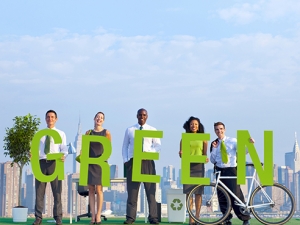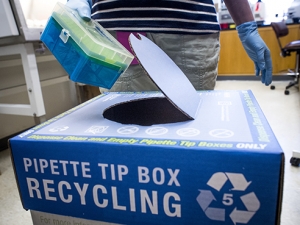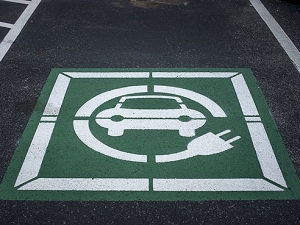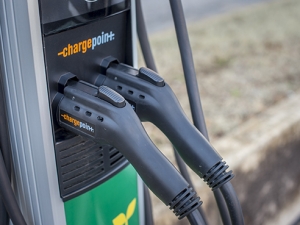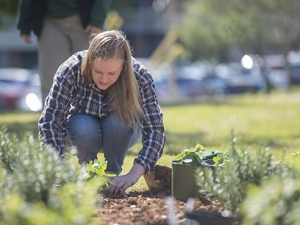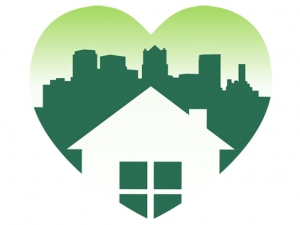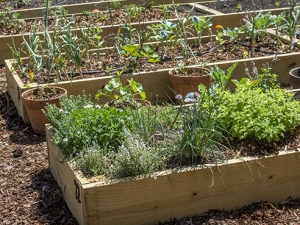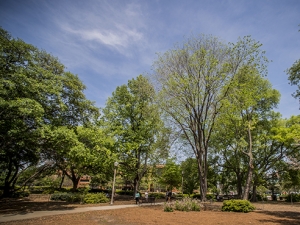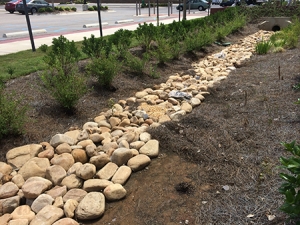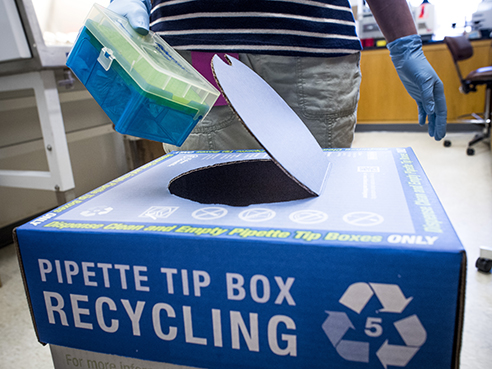 The list sounds simple: Wear recyclable gloves. Unplug lab equipment. Defrost freezers when possible. Use recyclable batteries. But if you have most all the labs in a major UAB research facility checking those boxes at once, it could mean big savings — in energy and dollars.
The list sounds simple: Wear recyclable gloves. Unplug lab equipment. Defrost freezers when possible. Use recyclable batteries. But if you have most all the labs in a major UAB research facility checking those boxes at once, it could mean big savings — in energy and dollars.
Twenty labs in the Bevill Biomedical Research Building — nearly every lab in the structure — are joining the year-old Green Labs program, a partnership between UAB Sustainability and Occupational Health and Safety to help research labs use simple measures to lessen energy use, reduce waste and lower costs.
During its inaugural year, UAB reduced energy consumption an average 30,000 kilowatt hours per participating lab — saving the equivalent of about $3,600 each among 56 Green Labs members. Now with 76 participating labs, the savings to UAB could scale to $273,600 in year No. 2.
To put it in practical terms, one lab from the inaugural cohort saved as much electricity as seven homes use in one year, according to Nick Ciancio, Sustainability intern, Green Labs coordinator and senior studying neuroscience.
“The substantial interest we’ve already seen in the Green Labs program proves many at UAB are committed to making our research labs as sustainable as possible,” Ciancio said. “By bringing in the Bevill labs, we have the opportunity to get data on what it looks like for an entire research building to go green, which could inspire other labs to join.”
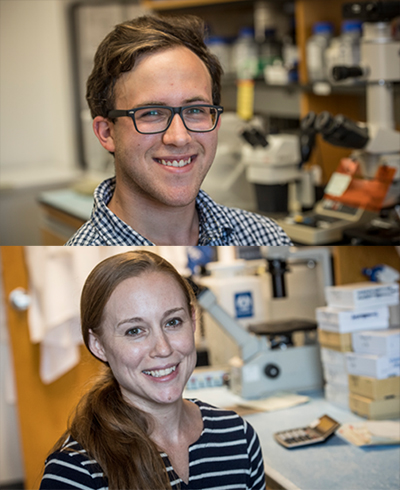 Nick Ciancio, Sustainability intern, Green Labs coordinator and senior studying neuroscience (top) and Sarah Sterrett, a research assistant in a fifth-floor Bevill lab Simple changes
Nick Ciancio, Sustainability intern, Green Labs coordinator and senior studying neuroscience (top) and Sarah Sterrett, a research assistant in a fifth-floor Bevill lab Simple changes
Bevill was chosen for the building pilot because it’s already one of the most energy-efficient buildings on campus.
Sarah Sterrett, a research assistant in a fifth-floor Bevill lab that conducts first-response HIV research with the School of Medicine’s 1917 Clinic, was one of the inaugural Green Labs participants. She wants to see the initiative become standard for all labs on campus.
“I’ve learned that there are so many simple, easy changes you can make — such as turning off equipment after each use, turning off lights when you leave a room, chilling up freezers, being aware of your ordering practices — that really add up to a big difference,” Sterrett said. “It’s really just a matter of changing habits. While that can be difficult initially, after you get started it’s really not burdensome.”
|
During its inaugural year, UAB reduced energy consumption an average 30,000 kw hours per participating lab — saving the equivalent of about $3,600 each among 56 Green Labs members. |
Getting started
While Bevill is participating in Green Labs as a building-wide project, any lab on campus can sign up to be a part of the program. Participants begin by completing an initial survey from My Green Lab, designed by a California-based nonprofit that includes academic institutions and some of the scientific community’s largest corporations among its lab sustainability clients. Labs have six months to implement changes recommended by UAB Sustainability to earn a Green Lab certification.
UAB Sustainability sponsors programs that make Green Lab recommendations easy to implement, such as lab recycling and glove recycling. Green Labs participants can request recycling services for items such as pipette tip boxes, polystyrene Styrofoam, packing peanuts and nonhazardous nitrile and latex gloves.
“We are committed to working alongside labs to help them become as green as possible, underscoring UAB’s position as a leading center of research and innovation,” said Julie Price, manager of UAB Sustainability.
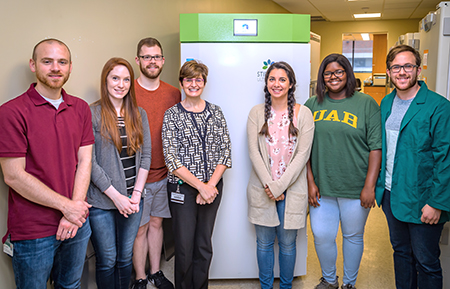 Inaugural participant Lyse Norian, Ph.D. (center), associate professor in the Department of Nutrition Sciences, won a Stirling ultra-low temperature freezer from the Green Labs program.Icy incentives
Inaugural participant Lyse Norian, Ph.D. (center), associate professor in the Department of Nutrition Sciences, won a Stirling ultra-low temperature freezer from the Green Labs program.Icy incentives
New Green Labs participants in the Bevill Building that achieve certification in 2018 will be entered to win an ultra-low temperature (ULT) freezer, which operates between -86 degrees Celsius and -40 degrees Celsius and uses three times less energy than a traditional ULT freezer.
|
UAB Sustainability is committed to working with labs to help them become as green as possible, underscoring UAB’s position as a leading center of research and innovation. |
In 2017, inaugural participant Lyse Norian, Ph.D., associate professor in the Department of Nutrition Sciences, won a Stirling ultra-low temperature freezer, which has a volume capacity of 780 liters, operates between -86 degrees Celsius and -20 degrees Celsius and uses all-natural refrigerants. Norian said she and neighboring labs in the Wallace Tumor Institute plan to use the extra space provided by the new freezer to defrost their existing freezers.
Defrosting extends the lives of freezers because ice and dust insulate heat dissipation and make the freezer’s compressor work harder, Price said — and it provides an opportunity to take inventory of freezer contents.
“If changes in my lab can make a difference in energy use, think what an effect we could have once labs across campus are taking these same simple steps,” Norian said.
All energy savings being equal, the savings potential for the nearly 1,200 labs overseen by principal investigators at UAB could approach $4.3 million, based on the average savings per lab in the program’s first year.
Julie Decker, Bevill’s building manager and a program manager in the Department of Microbiology, said she’d recommend every lab at UAB sign up to participate in Green Labs.
“When you have principal investigators passing on energy-saving suggestions during their annual reviews with their department chairs, that is impressive and really shows how well the program has been presented and implemented in the labs,” she said. “I would highly recommend for all labs to get the training and belong to the program. It seems like it has changed the energy culture in Bevill for the better.”
To learn more about becoming a Green Labs participant, visit uab.edu/sustainability/greenlabs.
